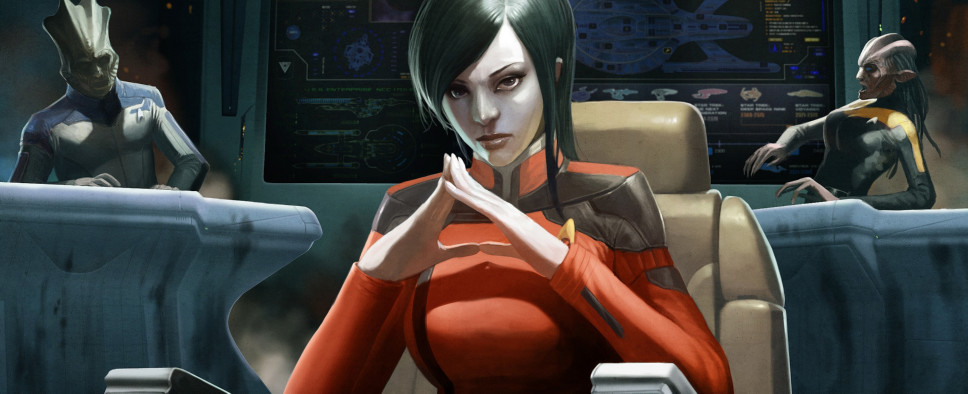Star Trek Online's 'Episodes' Are the Key to Its Success
-
Category: News ArchiveHits: 1451

This Gamasutra editorial praises Star Trek Online's treatment of the source material, its episodic mission design, and the dialogue box where you actually have to pay attention to what you're reading. In the author's eyes, these features elevate this MMO from just another free to play game with mediocre combat to something that can proudly wear the Starfleet insignia. Have a look:
The quality of its narrative is uneven, but mostly good and mostly very Trek-y. The best parts of the game are those that manage to go beyond mere combat to tell an interesting story about Trek’s weird, wonderful galaxy. Helping a species new to warp drive take their first steps out beyond their homeworld, for instance, or traveling back in time to stop a comet from attracting transphasic ghosts.
There’s also no small joy to be had in how the game takes minor plot points from the old TV shows and spins them out into grand stories in their own right, often bringing back the original actors to provide voice work for the continuation of their stories. An obscure species that featured in a single episode of Voyager becomes the big bad for an entire satisfying arc about the Delta Quadrant; the fate of Tasha Yar spools out into an entire series of quests, and her half-Romulan daughter became a world historical figure. In the meantime, an epic and moving mission sees you help Captain Harry Kim make peace with a clone of himself created by a temporal rift. Yes, it’s all really weird--and that’s as Star Trek should be.
But it’s worth paying tribute to what makes this possible in STO. It’s the way each mission is structured as an “episode” of a television show. If you look, most missions in the game follow the narrative beats of an hour-long network TV show, which makes the game’s switching between its space and ground phases feel natural and even necessary. It’s, of course, a lot more combat heavy than The Next Generation, but that doesn’t stop the story from being told.
Many missions start with a certain goal that is quickly superseded by rapidly evolving events. A quiet series of lunar scans turns into a search and rescue operation which turns into a race against time to stop a planetary superweapon from going off; it’s an old narrative trick but it’s used to stunningly great effect here in a way that has the added benefit of thoughtfully expressing Trek-y themes. Having these wild, sometimes improbable narrative jump-cuts makes STO feel like the show.
Like most of these games, of course, combat can become a tedious and pointless grind--which feels especially prevalent in the away team missions. These third person combat sections, which most resemble traditional MMO combat, are the weakest part of the game in nearly every measure; gooey controls, ugly graphics, repetitive and uncreative combat. But the game shines in both its space battles (where there’s a surprising amount of replayability due to the fully 3D nature of it, permitting a kind of strategic thinking I’ve not toyed around with this much since Homeworld) and in its non-combat bits.
Making a successful videogame that ties into a popular, non gaming IP relies on capturing the feel of the original work to some degree. STO manages this quite neatly in a number of simple, cost-effective non-combat puzzles in many of its missions. I am always pleasantly surprised when a game forces me to sit up and actually pay close attention to what I’m reading, where I’m asked to remember key facts and details, or names, or a certain order of operations for a later task. It’s almost always all multiple choice menus; STO gets a surprising amount of mileage out of its dialogue box, which does duty as everything from a frequency tuner to a warp core to an alien artifact. One gets the sense that this was a cost cutting measure. It forces a single, simple UI to do so much; that it’s done with such finesse is a testament to the skill of Cryptic’s developers.

